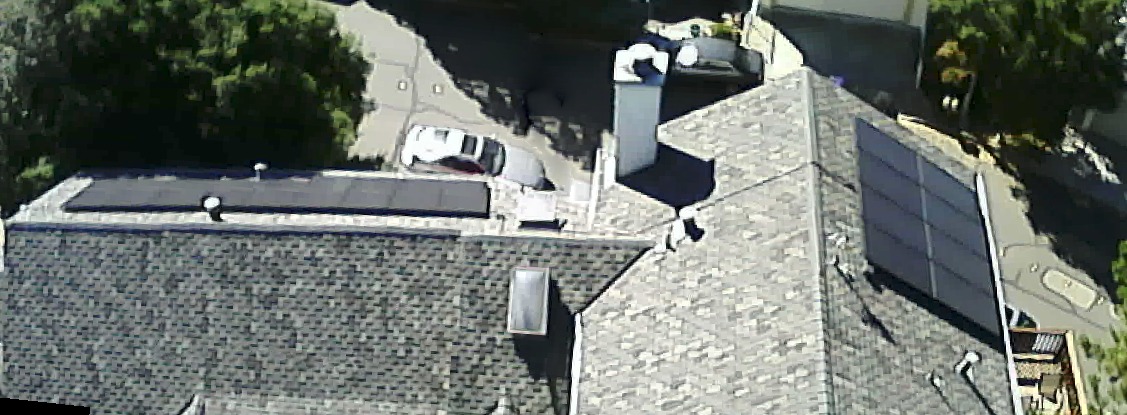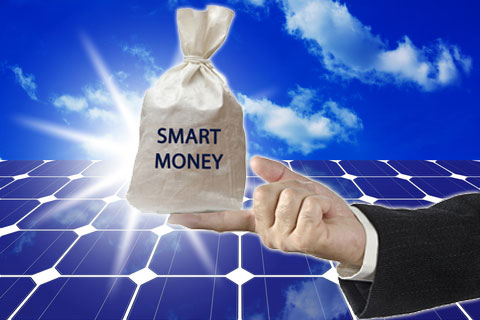Our Solar Panel Installation - Epilogue, Three Years Later
In 2014, my wife and I took the plunge and installed solar panels on our house. In late 2016, we had an opportunity to move back to our home town in Michigan. In November of 2016, we said a tearful goodbye to sunny California, our wonderful friends and neighbors, our home of nearly 20 years, and its solar arrays. Since I know very few people who have bought and sold their own panels, I thought I ought to write about our experience. This page is the epilogue to Our Solar Panel Installation.
How well did the system work?

The system worked flawlessly from September of 2014 to November of 2016. It
produced 19.5MWh during that time, which was about 5% less than what the
Enphase system predicted.

I was expecting peak output during the summer, but the system consistently did
its best and outperformed the Enphase estimates during the spring. On its
very best day, April 29th 2015, the system produced 37.3kWh. It almost broke
that record a year later on its second best day, April 25th 2016, when it made
37.1kWh. I have to assume that is due to air quality and temperature. Summer
in the east bay can be hazy and hot, but April is usually clear and cool when
it isn't raining. Those years, 2015 and 2016, were at the tail end of a
critical drought in California, so there was no rain, and the high temperatures on
the record setting days was only 73F and 68F. By July, when Enphase and I were
expecting peak production, the high temps were in the low 100's, and production
was down.

I did hose off the panels one time. The Enphase system showed me that one of the panels was underperforming slightly, so out of curiosity I went up to see why. Sure enough... it was soiled. Badly. I suspect it was from a turkey (we had flocks of turkeys roaming around our neighborhood, and they do fly onto roofs) or from a buzzard, but I'm no ornithologist. From the size of the mess, it could have been a condor, albatross, or a maybe a small winged horse. Anyway, the hose took care of that panel, and spraying the dust off the others didn't really seem to make any measurable difference in production for the rest of the array.
Late in 2016, one of the trees started shading some of the panels in the southern array during a small part of the day. The mircoinverters did what they were supposed to do! The shaded panels dropped production, and the rest of the array kept making juice. If I'd have gone with a standard string system without the inverters, the whole array would have suffered, and I'd have been into some serious tree surgery.
On the whole, I'd say the system was great, and we were very happy with how it performed!
Did it cover your electrical consumption?

The system covered our electricity and then some. Cobalt spec'd out the system to support our existing electrical consumption along with the addition of a plug in electric car. We moved before buying the car, so we had a serious surplus of electricity for the time that we owned the system. PG&E ended up owing us money for electricity at the end of the net metering cycles. Its not a good way to make money though. In CA, you buy power from them at the residential rate, they buy it from you at the wholesale rate, so after the grid connection fees, they only owed us a couple of bucks. It wasn't much, but getting those couple of bucks sure felt great!
Did it improve the value of our home?
Selling a home is a complex thing full of voodoo, lenders, appraisers, real
estate agents, comparables, and made up numbers, so its even hard to say
whether or not we directly recouped the value of the solar system in the sale
of our home. Why? Well, the price of housing in California is notoriously
high. The installed cost of our system ended up being less than 2% of what we
were able to sell the house for. The range of proposed sale prices that the
relators were suggesting we try to offer the house at was a lot wider than that.
Had the same system been installed on a similar house someplace in the
country with a less extreme housing cost, it would have represented a larger
percentage of the sale price, and we probably would have a better idea of
whether the system increased the home's value more than it's purchase price.

Subjectively, our Realtor said she heard from several of the prospective
buyers that the solar panels (which were called out prominently in our real
estate listing) were a big selling point in their decision process. We also
heard from our Realtor that some people who saw the house and expressed
interest in it didn't even realize until later that it had solar panels! How
cool is that? Clean renewable energy that many people won't even notice if
they aren't looking for it!

Objectively, I know that the panels were accounted for in at least one buyer's loan appraisal. Normally, you don't get to see that kind of appraisal, but because of some last minute dickering, we got got a chance to review it in detail. We'd given the buyer access to all of Cobalt's excellent system documentation, so the appraiser was able to correctly asses the value of the system with the right depreciation rate. My only complaint is that he used the after-tax-refund price for the value basis, instead of the up-front price. I suppose that since the federal credit is still in effect, that's not an unreasonable thing to do.
So... while I can't say for sure that the solar panels added value above and beyond their initial cost, I'm reasonably certain that we were able to recoup our investment in the sale price of the house. The "we may not live there long enough to pay off the panels" concern simply didn't apply. We invested in the panels, we paid less for our electricy while we owned them, and we sold the panels for what they were worth along with the house.
Would you buy it again?
I would buy residential solar panels again in a heartbeat! First, I just
love the technology. Simple, clean, efficient, no maintenance, no
inconvenience... what is not to love?

Well, I do know that I won't buy Suniva panels again. I went with Suniva
because of a combination of price point and efficiency, but what really tipped
my purchase decision toward them was that the panels were made in America, and
the company was opening a fabrication plant in my home state of Michigan! That
plant opened to much fanfare, brought new jobs to the area, and everything was
great.
That is, until they sold a majority share of the company to the Chinese, went broke, and shuttered
all operations three months later, without giving notice to the employees or customers.

I'm also not convinced that Enphase isn't going to go the same route. Their technology story is great, but Solar is a cutthroat business. When a company holds a share price around eighty cents down from a high of over sixteen dollars, you've got wonder if they maybe brought a white flag to the knife fight. Time will tell, I suppose. (See 2021 update below!)
Don't get the wrong idea- I'm not going to let casualties in the technology war dissuade me from installing panels again, and you shouldn't either! I strongly believe that the pursuit of clean renewable energy is the right thing to do. Companies come and go all the time as technology changes and improves. Its not a big deal, its part of how things get better, and an investment in one technology company today will help fuel the industry for tomorrow. I'm excited to be a part of it! I just wish that we'd hurry up and get energy storage up to speed, so that I could disconnect from all types of CO2 generating electricity. When batteries become a reasonable option ( and I don't think it will be long! ) you'd better believe I'm going to have those too!
Update 2021
George from Lightning Solar & Electrical sent me an interesting link about their take on Enphase micro-inverters and Enphase battery which he thought would compliment my page nicely.
Enphase appears to have advanced several rounds in the previously mentioned knife fight. They've gone from $0.80 a share to $217.21 a share in 2021. In 2014, I felt that the Enphase micro inverters were a great technology, and my opinion only went up for entire time that I owned an Enphase system. I guess I should have thrown some money into their stock too, because a couple of hundred bucks invested there in 2017 and sold today would have easily paid off the entire cost of the system.
I'm also excited to see that battery technology is coming along as predicted, and the Enphase battery does look pretty cool! Thanks for the info, George.
We did end up installing a 6.5kW solar panel system onto the house we bought in Michigan, but the experience was nowhere near as smooth or pleasant as it was in California. I couldn't find an installer in MI who would do an Enphase system, so we went with Solaria Panels and a Solar Edge inverter with string Optimizers. Still no batteries for us yet.
The view on solar energy is MUCH different in MI than in CA. How so? Well, without going into more detail that might dissuade other Michiganders from going solar, I will say that I had to contact my local state representative to finally get the simple grid-tied system up and running, and it was almost three years before the local power monopoly was able to bill me correctly after the install. Its all good now, though! The panels work great, and I'm glad I have them. I may even write a new page about the experience now that all of the administrative kinks have finally been worked out.
Time will tell!